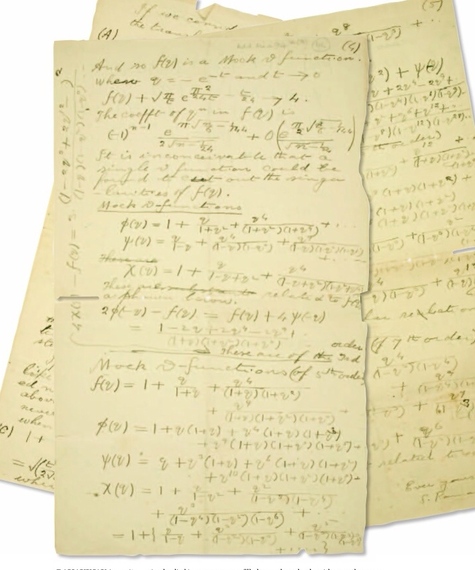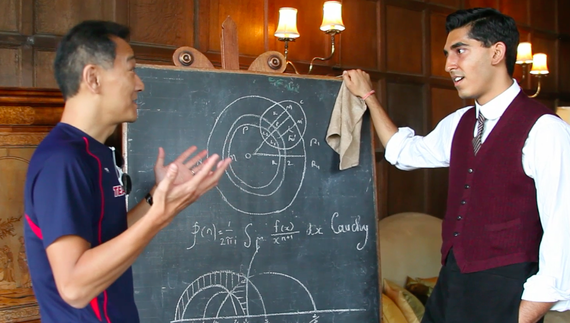Today, April 26, is the 95th anniversary of the death of one of the most astounding mathematical geniuses of all time, the self-taught Indian mathematician Srinivasa Iyengar Ramanujan (1887-1920), whose stunning contributions to many areas of mathematics are still being plumbed by experts today. He died, after having produced thousands of unexpectedly deep and elegant mathematical results, at the young age of 32.
Almost a century after he stopped deriving his mathematical gems--equations, identities, theorems, infinite series, and continued fractions--there is still much that we don't know or understand about Ramanujan. The biggest question is how an untrained teenager, and later young adult who repeatedly flunked out of college in his native south India (generally the area of Madras, today's Chennai), was able to obtain--all on his own--mathematical expressions that later would take some of the world's leading mathematicians years and even decades to ascertain and prove.
Ramanujan came up with his facts about integrals (familiar to anyone who has taken calculus), infinite series (sums of terms such as the well-known unending geometric progression 1, 1/2, 1/4, 1/8...), amazingly accurate estimates of pi, properties of partitions of numbers, and more, seemingly out of thin air, with no more of a guide than a hopelessly out-of-date book prepared by British math tutor George S. Carr half a century before his time.
Eventually, after facing near-starvation as he continually failed to obtain a job because of lack of a sufficient education, working alone on his mathematics, Ramanujan's unique talent began to be recognized in India, and local mathematicians encouraged him to send his papers to experts in the West. After two unsuccessful attempts to gain recognition, Ramanujan wrote to the prominent Cambridge mathematician G. H. Hardy, who eventually brought him to England and worked with him for a number of years, before Ramanujan became very ill, returned home to India, and died there of an uncertain cause.
Recently, Professor Ken Ono of Emory University, and colleagues, uncovered the mathematical source of some of Ramanujan's treasures: the so-called Rogers-Ramanujan identities. They have discovered that these mathematical formulas represented special cases of a vast "underground reservoir" of such math expressions--shedding light about the mathematics, but still leaving the mystery as to just how Ramanujan came up with them.
Ono has also co-discovered a proof of the so-called "Umbral Moonshine Conjecture," which is a theoretical connection between certain functions that Ramanujan described to Hardy in his last letter, just before he died, called mock modular forms and "monstrously large" groups in mathematics. String theorists hope that this connection may some day lead the way to new breakthroughs in physics to explain mysteries from black holes to the structure of space-time.
Ramanujan's last letter to Hardy, featuring examples of mock modular forms. Credit: Ken Ono
The new attention on the work of a lone genius who died a century ago has helped inspire a movie based on Robert Kanigel's excellent biography of Ramanujan written in 1991, "The Man Who Knew Infinity." Set to be released this coming fall, the motion picture by the same name will feature Dev Patel as Ramanujan and Jeremy Irons as Hardy. Mathematics can benefit from having its secrets explained in popular films, and if you liked "A Beautiful Mind" and "The Imitation Game," this one should offer a treat.
Mathematician Ken Ono explaining a mathematical concept to Dev Patel before the shooting of a scene for "The Man Who Knew Infinity," in which Patel plays the Indian genius Ramanujan. Credit: Ken Ono

